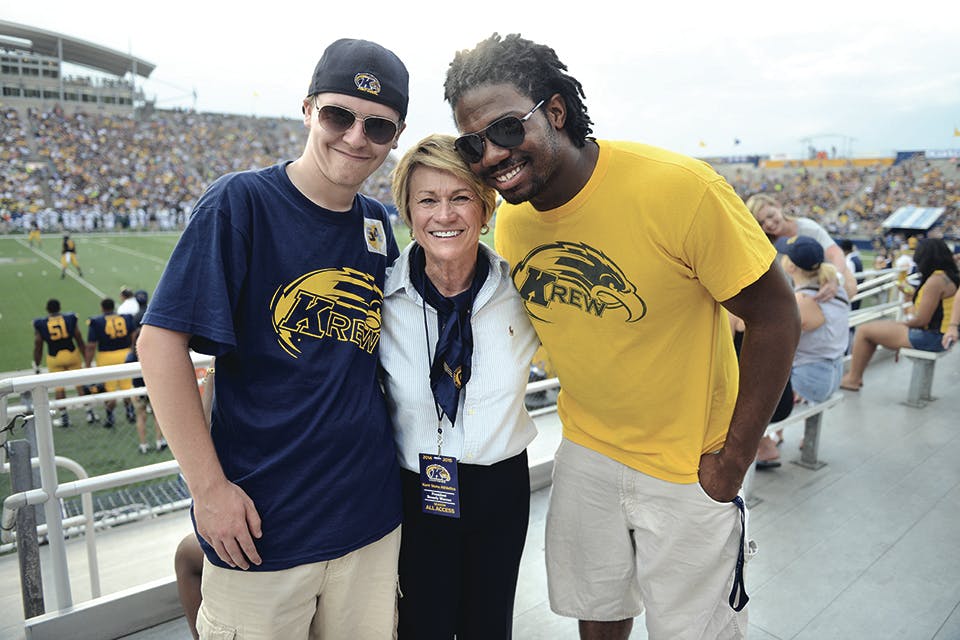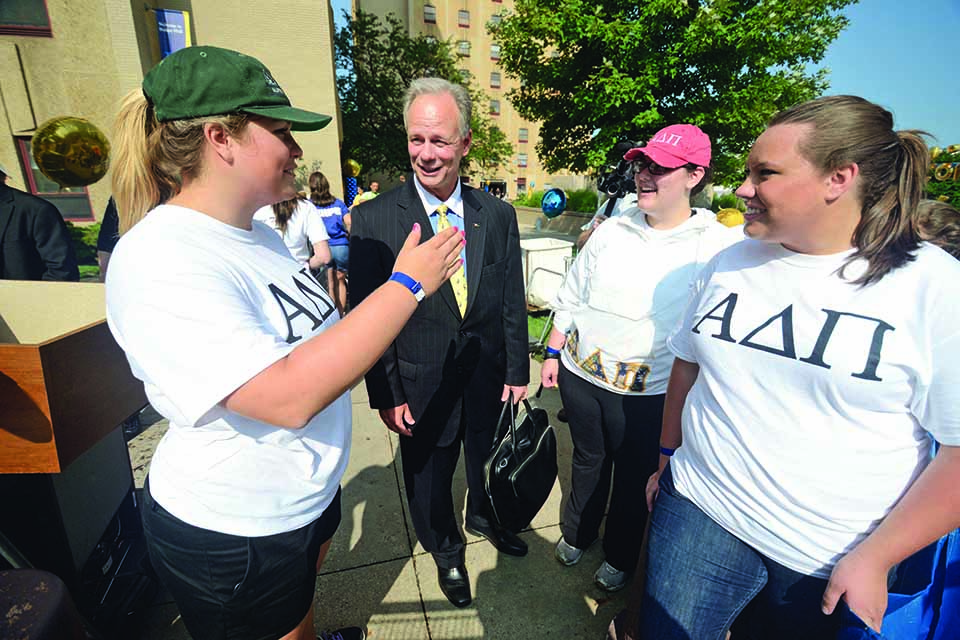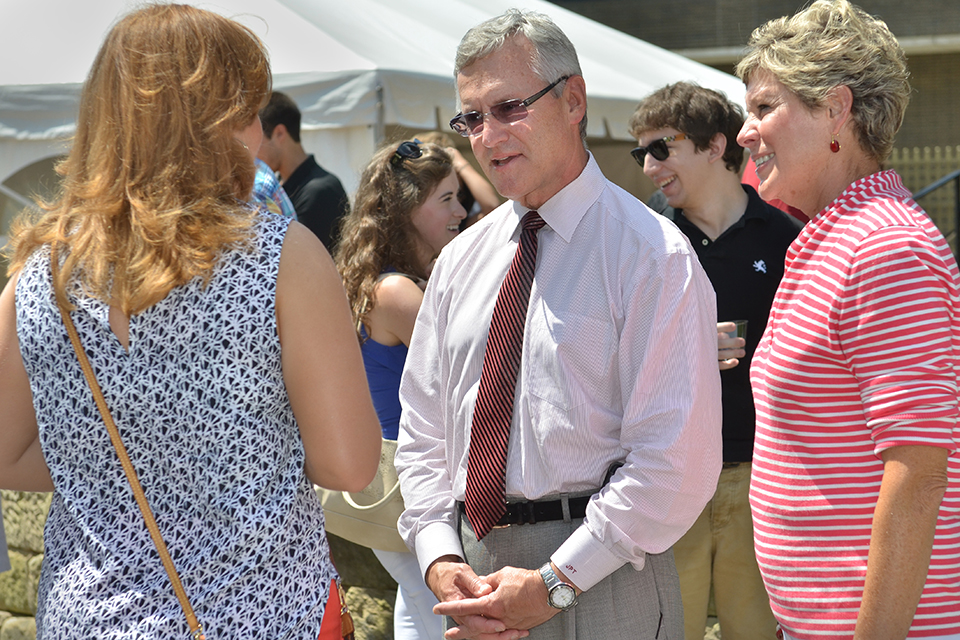Ohio Life
Presidents Day
Beverly Warren, Jim Tressel and Scott Scarborough each took the helm of one of Ohio’s state universities this fall.
Related Articles

Veteran Reporter Gene Kinn Reflects on a Career of Covering Presidents
Gene Kinn talks about meeting nine U.S. presidents over the course of his more than three-decade career in journalism. READ MORE >>

Columbus Celebrates Armistice Day
On Nov. 11, 1918, Ohio’s capital city joined communities across the United States in spontaneous celebration marking the end of World War I. READ MORE >>

10 Architectural Landmarks That Share Ohio’s History
From Cincinnati’s grand Music Hall to the Springfield house designed by Frank Lloyd Wright, these buildings and homes trace the history of our state. READ MORE >>





